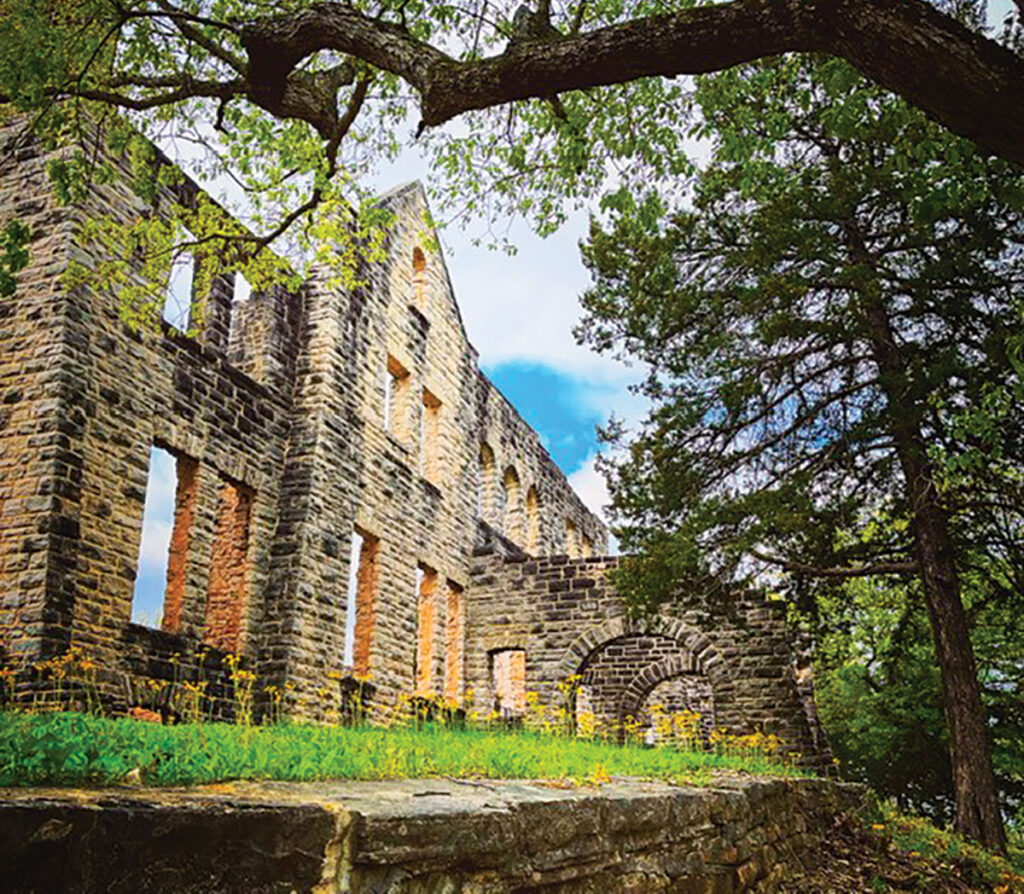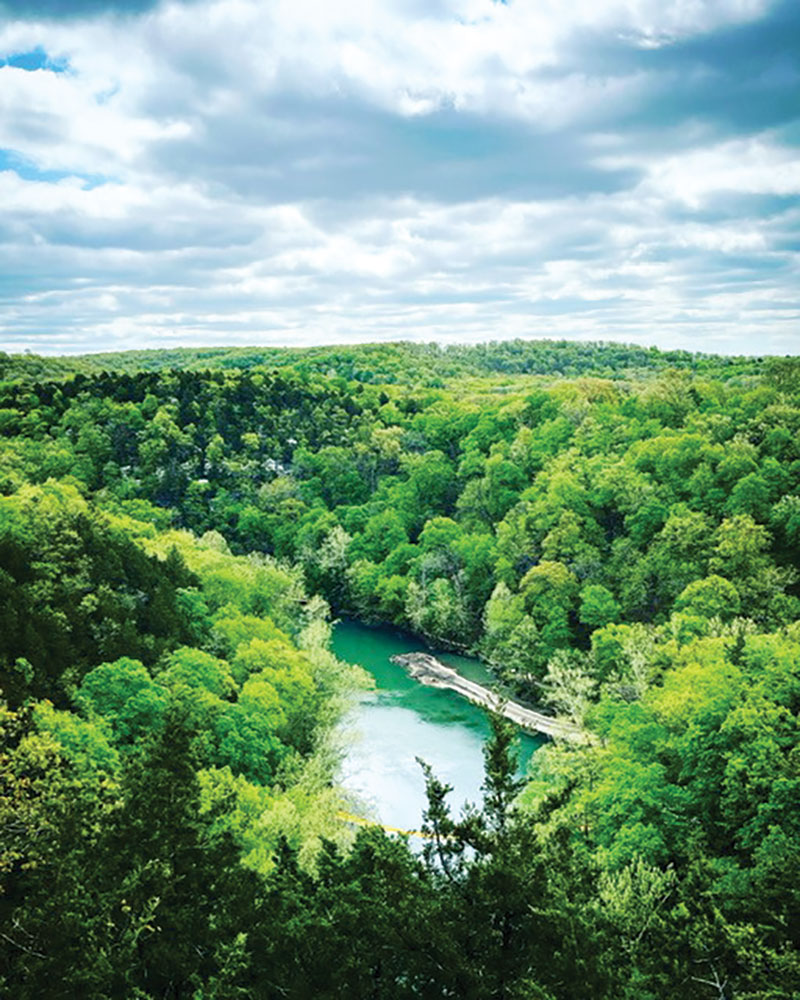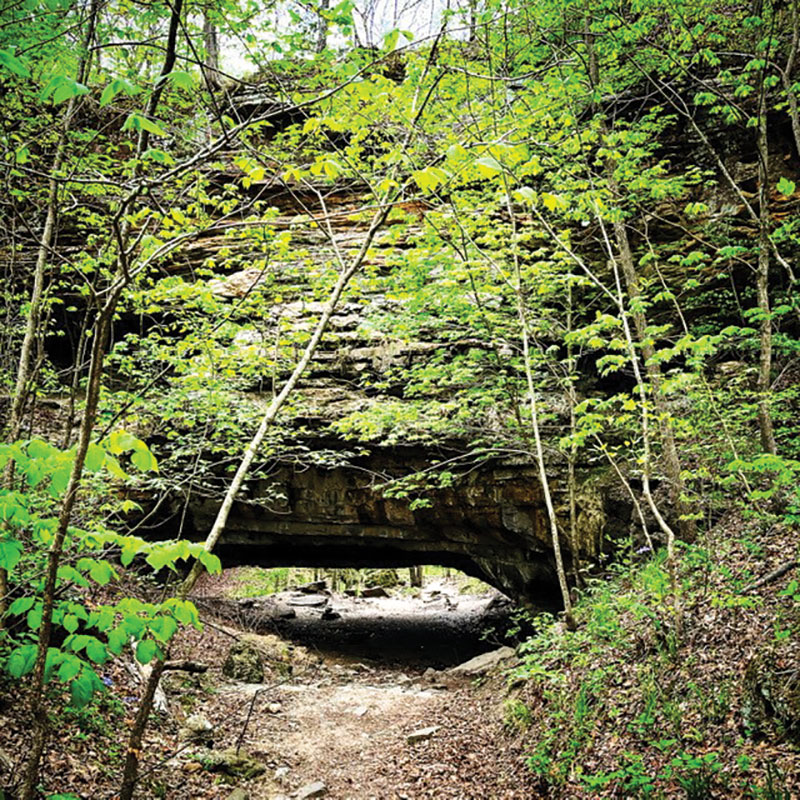
Ha Ha Tonka began as a businessman’s retreat
Nestled between the Missouri cities of Lake Ozark and Camdenton, is an enchanted lakeside oasis of exquisite beauty, and interesting historic relevance is Ha Ha Tonka State Park.
“Ha Ha Tonka” means big laugh, smiling waters, or more specifically, laughing spirit. Robert McClure Snyder, a businessman from Kansas City was taken with the land and surroundings upon his initial visit in 1903, and dubbed the area Ha Ha Tonka.
Ha Ha Tonka State Park is located down a windy, curvy, back-to-nature highway off of scenic Highway 54, with a visitors center strategically located near the entrance to the park. The visitors center houses a wide array of locally authored books, area trail maps, informative trail updates, and several informative displays of local wildlife and botanical examples of what to look for when venturing into the waiting forest beyond. The park rangers working in the visitor’s center are integral sources of information. Several of the trails are closed in the spring and early summer for seasonal upkeep and construction, so visitors should check in at the visitors center to be sure which trails are closed and which trails provide the most scenic views and/or historic stories.
According to Legends of America -Traveling Through American History, Destinations and Legends, the land originally belonged to the Osage, Cherokee, and very likely other Native American Tribes. Early pioneers (Daniel Boone and his son, Nathan, are among those mentioned in the online article) traveled through this very slice of what later became the central-most portion of them state on their long voyage West.
In addition to scenery of the Ozarks are the ruins of a once stellar mansion atop a cliff bluff, scenically overlooking the Lake of the Ozarks.

Robert Snyder amassed a great deal of wealth from real estate, banking and other creative business ventures. He purchased the land that is now a state park, with the dream of building a European-style mansion scenically overlooking the vast expanse of turquoise blue lake below. The structure was erected using quarried limestone from the forested surroundings. One of the trails leads to the quarry where much of the stone was collected for the massive building undertaking.
Also located on the original property was a carriage house, just a short distance down the hill from the mansion. In addition, a high-rise water tower was built and still stands.
Snyder was tragically killed in an automobile accident in Kansas City before his beloved mansion saw fruition. His sons — Robert Jr., Leroy and Kenneth — continued to work on the behemoth project for the next several years.
Due to the Great Depression and several internal financial difficulties, the mansion was eventually leased to a Mrs. Ellis, who opened it up for guests to stay in a romantic hillside get-away in the form of a pricey, upper-class hotel.
In 1942, one of the many fireplaces sparked and violently set fire to the roof of the mansion, burning it from the inside out. Visitors can still see the black flame evidence on the outer walls. The carriage house was also burned. The water tower was said to be set aflame by vandals several years later.
The land and remains of each building now belong to the state of Missouri, and opened in 1978 as a state park for all to enjoy.
The numerous scenic overlooks offer breathtaking views. Some are built for the masses to safely enjoy, and others are naturally formed and restraint from danger is well-advised.

One such trail looks out over the serene lake, with its sheer turquoise water below. Another trail meanders through the forest with limestone peppered along the edges of the trail. Still another trail leads to the waterfall for which the name Ha Ha Tonka was said to be inspired.
One of the must-see sites is an easy downhill walk from one of the many parking lots. The Natural Bridge formation a huge rock dwelling with an open walkway underneath, leading to yet another walking trail expanding further into the park.
Dogs are welcome at Ha Ha Tonka State Park. They must be on a leash and owners are expected to clean up after their furry friends.
There are no bike trails at the state park, all trails are intended for walking, hiking and running. The trails are very hilly so visitors are sure to get a great workout, depending on how strenuous they would like it to be. The trail to the mansion dwellings is paved. The other trails to the lake, natural bridge and natural springs are made of rock, gravel, dirt, and in places require great attention to avoid a nasty spill.
Dogwoods are peppered throughout the more wooded areas, beautifully highlighting Missouri’s official state tree. There is also an abundance of wildflowers along each walking trail. Bright yellows, purples, lavenders and the off-white of the Dogwood flowering trees offer a colorful escape straight to the core of nature’s most scenic surroundings.
The trails vary in distance and difficulty. The longest hike is 7 miles, but visitors can easily access a view of the castle by parking in the paved lot nearest the carriage house and walking less than a quarter of a mile to see both the carriage house and the castle.
The park is open year-round.







